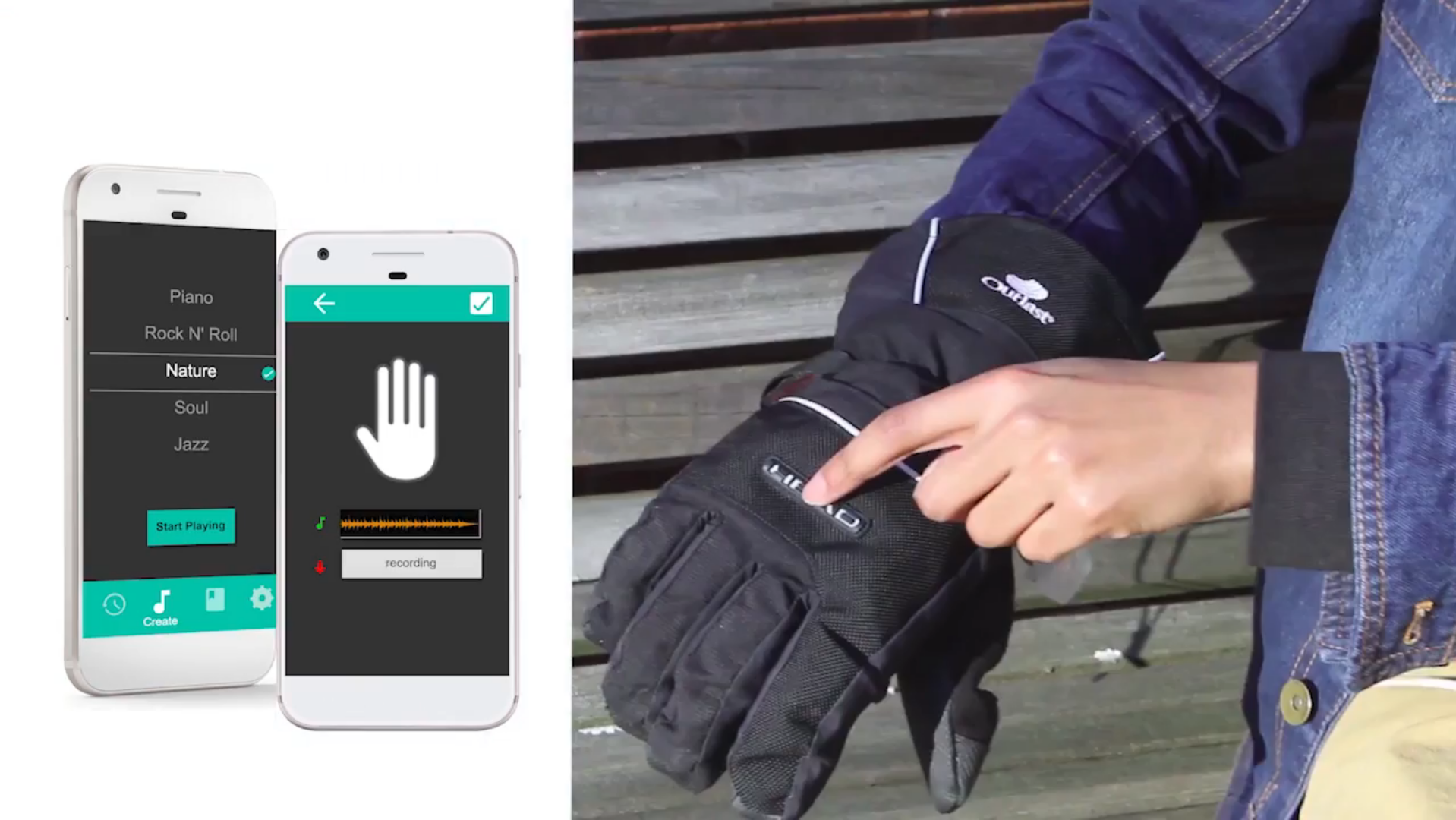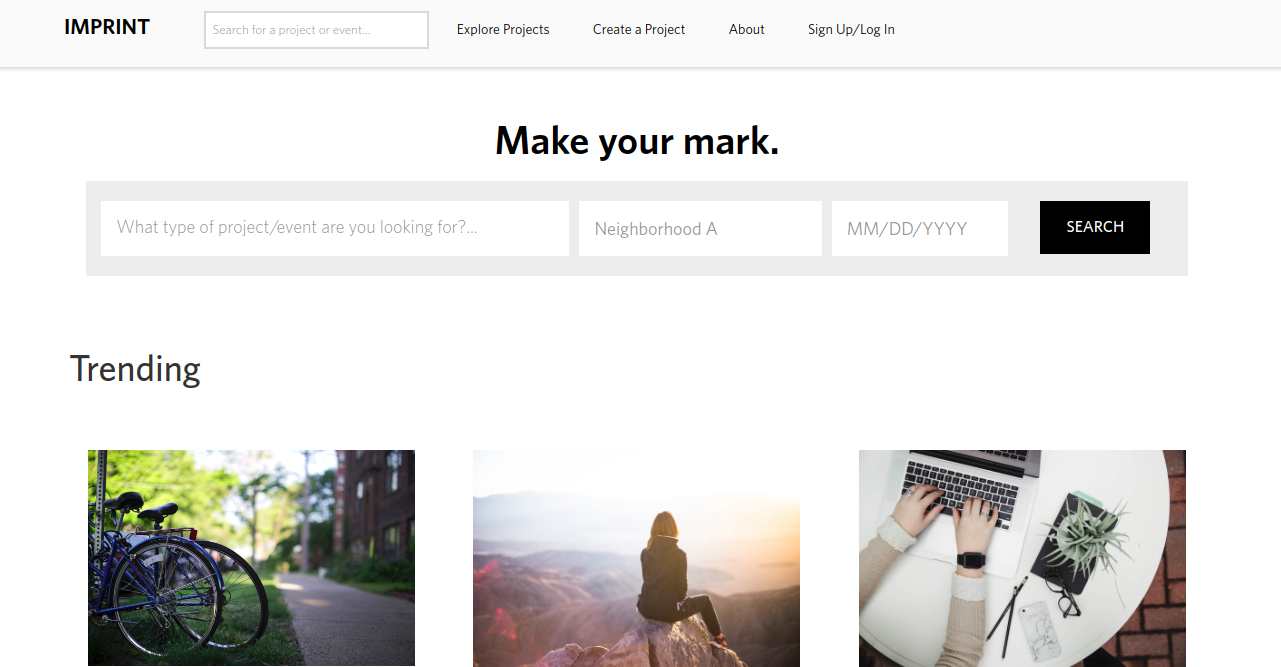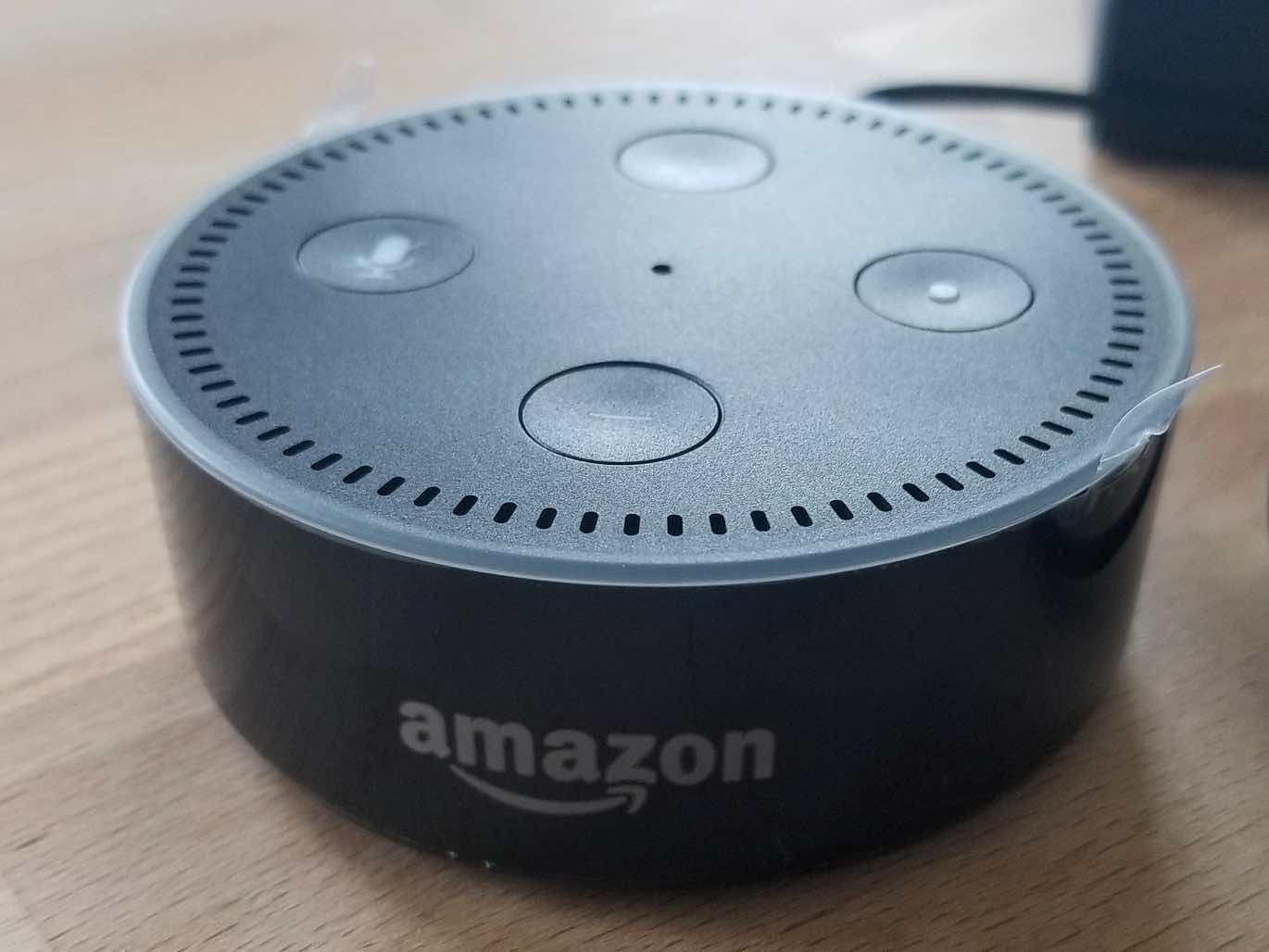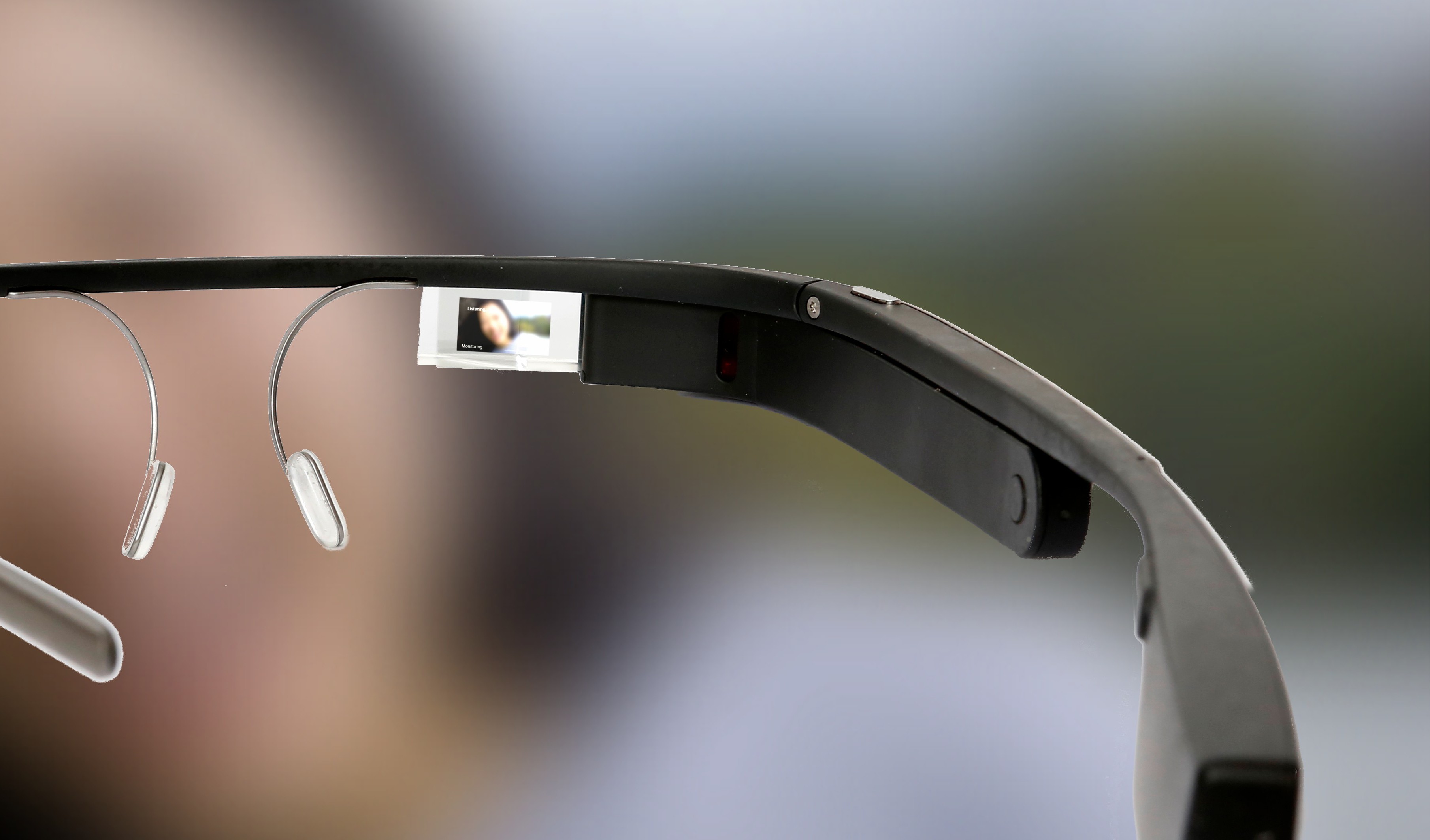Linda Zhang
VR Developer | Interaction Designer | UX Engineer
VR Game Development
LOAM
Amebous Labs - indie VR studio
Inspired by the popular quarantine game Animal Crossing, Loam is designed for the rapidly-growing population of gamers new to video games. I joined the project after the ideation and prototyping stage of production. I mainly focused on refining the UX of the VR gameplay and writing production code for the final product.
Starting with early prototypes of the gardening mechanics, I rewrote the backend in order to support the freeform nature of a simulation game. The process involved
- refactoring the core systems based on data-oriented design principles (as oppose to traditional OOP) by separating the data from its representation;
- abstracting the VR interactions into reusable code that can be assigned to any interactable object.
- Released in Jan. 2022 on Oculus App Labs
- Supports Oculus (Meta) Quest 1 & 2
VR Protyping
CampusVR
IMAGINE Lab, Georgia Tech College of Design
As a Graduate Research Assistant, I am working on redesigning and implementing the user experience in CampusVR. It is a collection of campus planning tools as well as a virtual gallery to showcase the latest work of CSPAV (Center for Spatial Planning Analytics and Visualization) at Georgia Tech.
I prototyped several methods to interact with a 3D campus map, including holograms, 3D UI, and searching via a drum keybaord.
I also experimented with seamlessly changing the interaction mode: the default laser pointer automatically turns into a small "mallet" when the user intends to interact with tiny targets on the map.
- VR User Experience Design
- Rapid prototyping in Unity
- HTC Vive Pro headset and controllers
- Custom VR gloves powered by HTC Vive Trackers
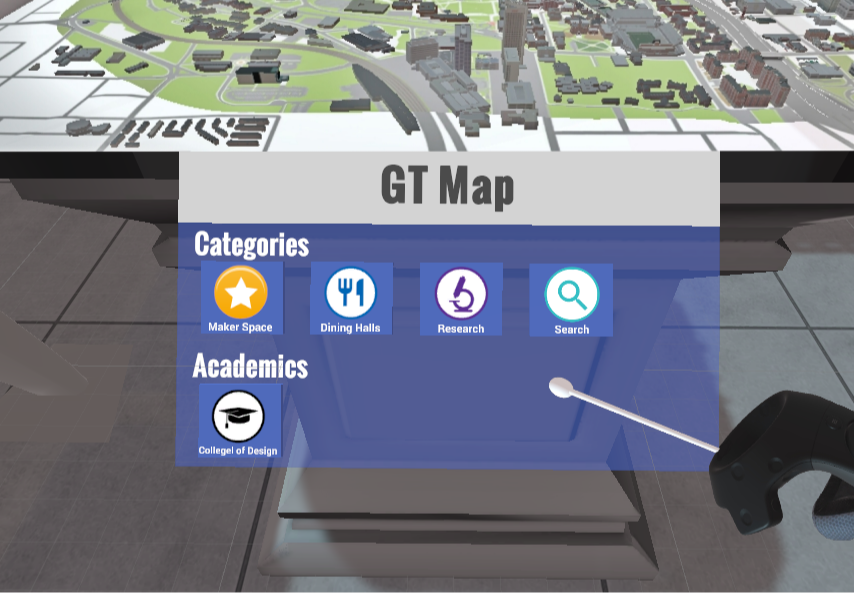 The mallet provides precise control when interacting with the tiny buildings on the 3D campus map and the 3D UI
The mallet provides precise control when interacting with the tiny buildings on the 3D campus map and the 3D UI
VR Game User Experience
At Moxie, I worked on Stay Alive Live, a game that aims to fill the gap of VR game in Twitch streaming designed back in 2016. It encourages audience engagement by allowing the audience to vote in Twitch chat and directly influence the gameplay.
- Applying Usability Heuristics in VR
- Designing VR User Interface:
a summary of effective VR user interfaces
VR Training
Pharmaceutical Lab Training
I worked as a VR Developer at Foundry 45 which specialized in VR training development. Some of the VR training products I've worked on can be found here: Virtuosi®. Along with development, I designed and implemented a tool inventory system for a manufacturing VR training application through iterative design using sketches and high-fidelity prototypes. (Email for work samples)
VR Barista Training
During my internship at Moxie, I worked on improving the user experience of VR barista training. We explored the user interface design of order processing and step-by-step instructions.
- VR User Interface Design
- User Experience Engineer
Brain-Computer Interaction Experience
ZenWave
I used the Muse Headband to develop an experience that showcases the potential of Brain-Computer Interface.
This demo guides users through a series of actions to control the visuals on the wall through their brainwaves. Then they meditate for one minute using the visuals and audio cues. The visualization of their brainwave during the meditation will be shown on the TV.
- Brain-Computer Interface
- Ineraction Design
- User Experience Engineer


Designing of VR Gesture Interface
Master's Research Project
Virtual Reality (VR) is a platform that quickly became popular in the past few years, with hundreds of VR games, VR experiences, 360° videos releasing each year. However, the modes of interaction does not catch up. The lack of an effective, standardized interface is one of the problems of this platform.
Therefore, I am proposing a VR Gesture Interface based upon Shneiderman's HCI framework on user interface design.
My project is a VR game with gesture control as its core game mechanism. The player can interact with the virtual environment through the help of a virtual companion. Using gestures to communicate and command actions, the player will control the companion to do certain tasks.
- Human Computer Interaction
- VR User Interface Design
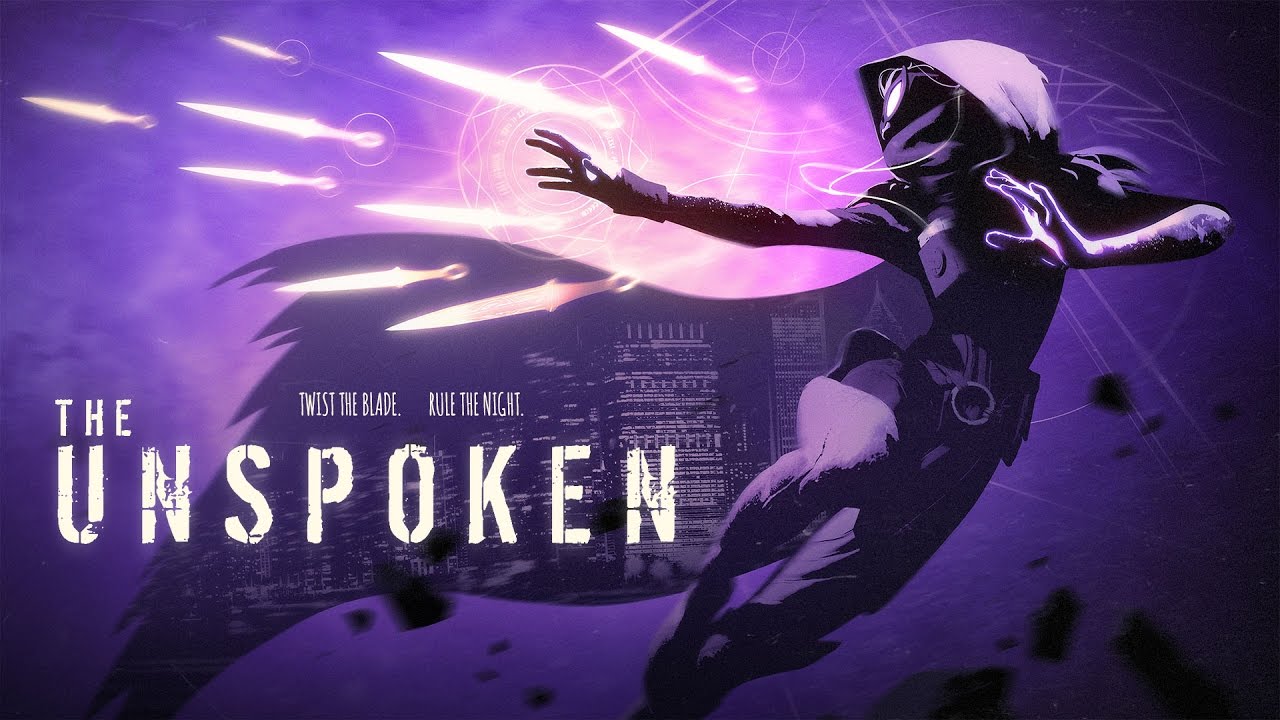 The Unspoken
The Unspoken
 Moss
Moss
Physical Prototyping
GBAM Music Wristband
GBAM (Gesture-Based Audio Mixing) wristband allows DJs and performers to mix and create music live on stage. We prototyped and implemented this using Arduino and accelerometer sensor.
A gesture interface of 16 different gestures was defined and implemented.
- Wearable Technology
- Interaction Design
- Software Engineer
Interaction Design
Music Glove
I designed a wearable instrument in the form of a glove. It allows users to explore their environment in a whole new way and create music using their hands.
- User Experience Design
- User Interface Design
- Wearable Technology
Front-end Web Development
IMPRINT
I worked in a team of 4 to build this interactive web app, which allows community associations and members to sign up for events and host new events.
- User Experience Design
- Web Development

 Gardening simulation & decoration game
Gardening simulation & decoration game
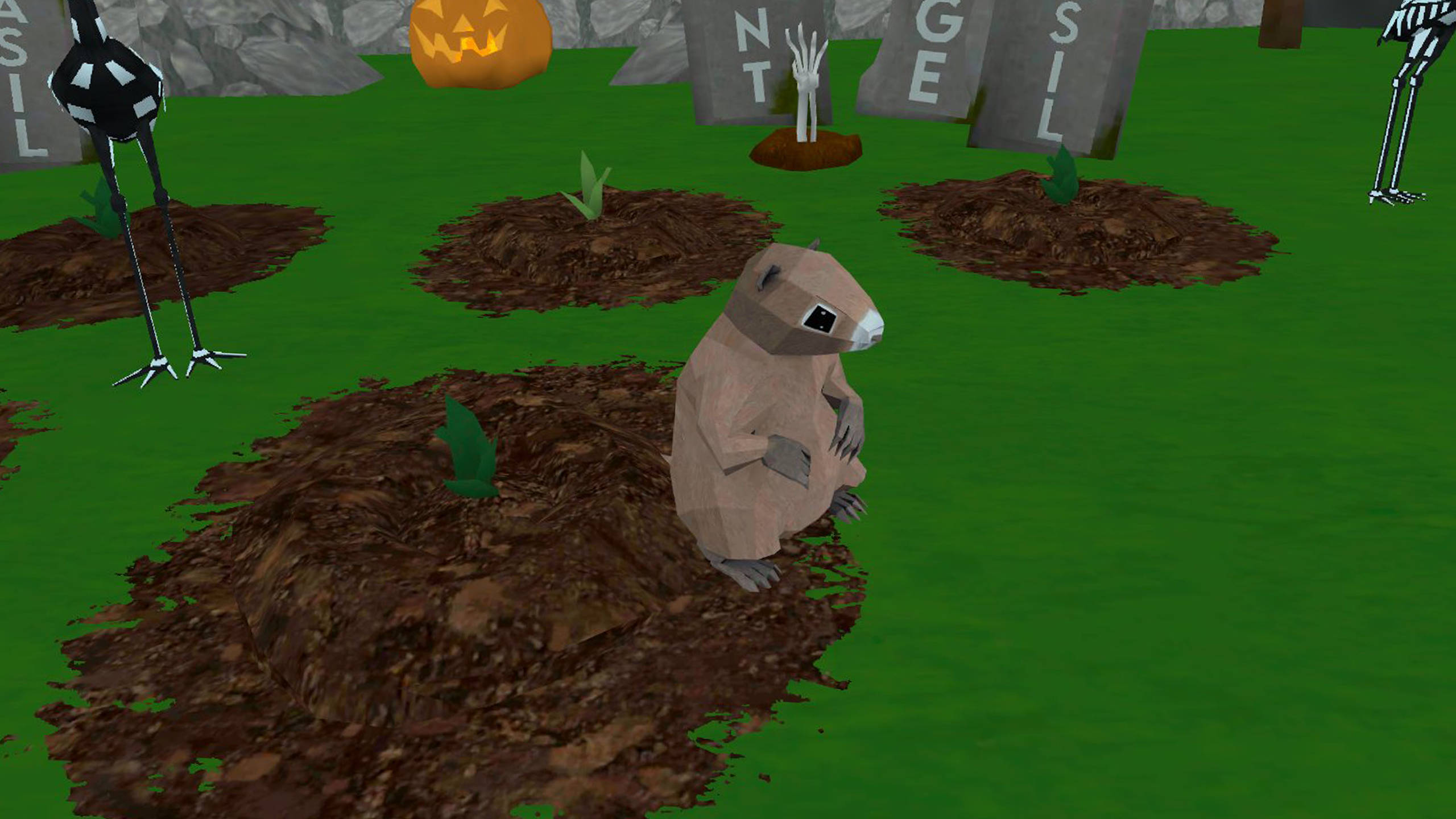 Critters show up near their favorite plants
Critters show up near their favorite plants
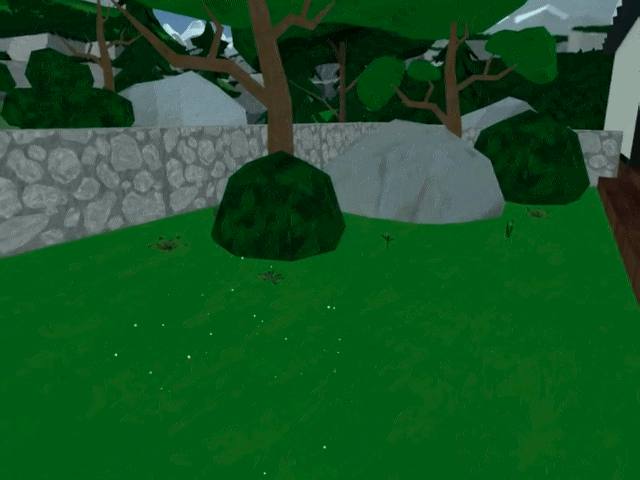 Storing and manipulating objects
Storing and manipulating objects


